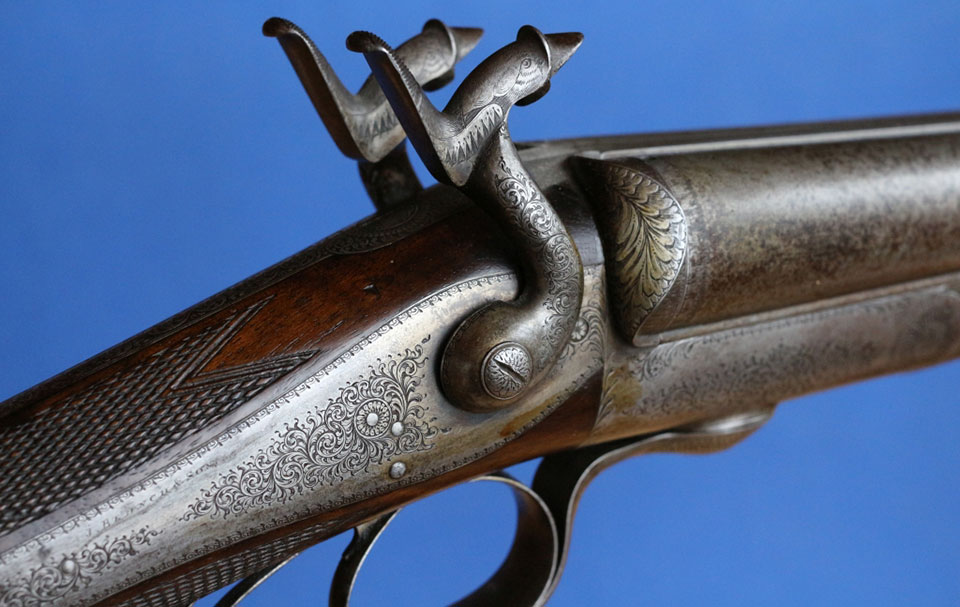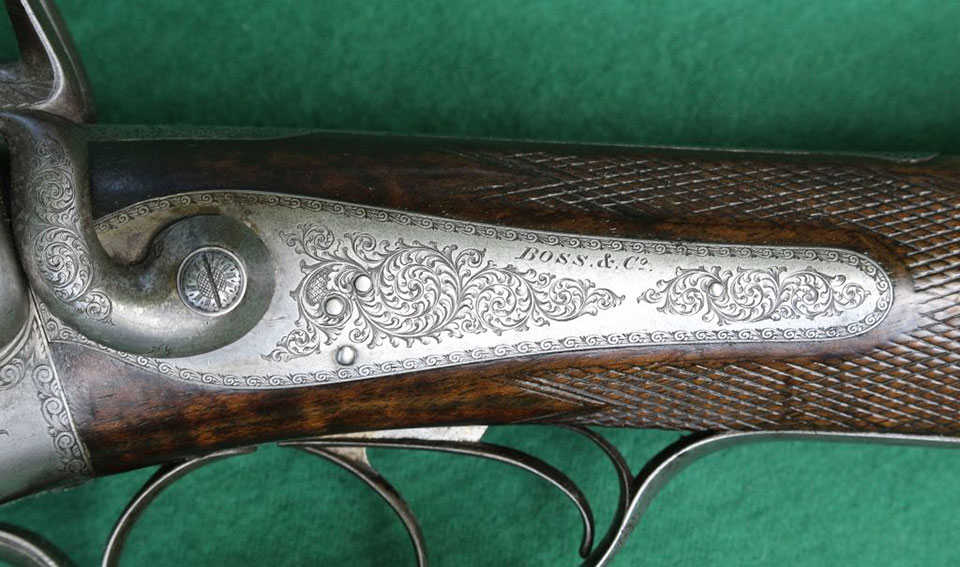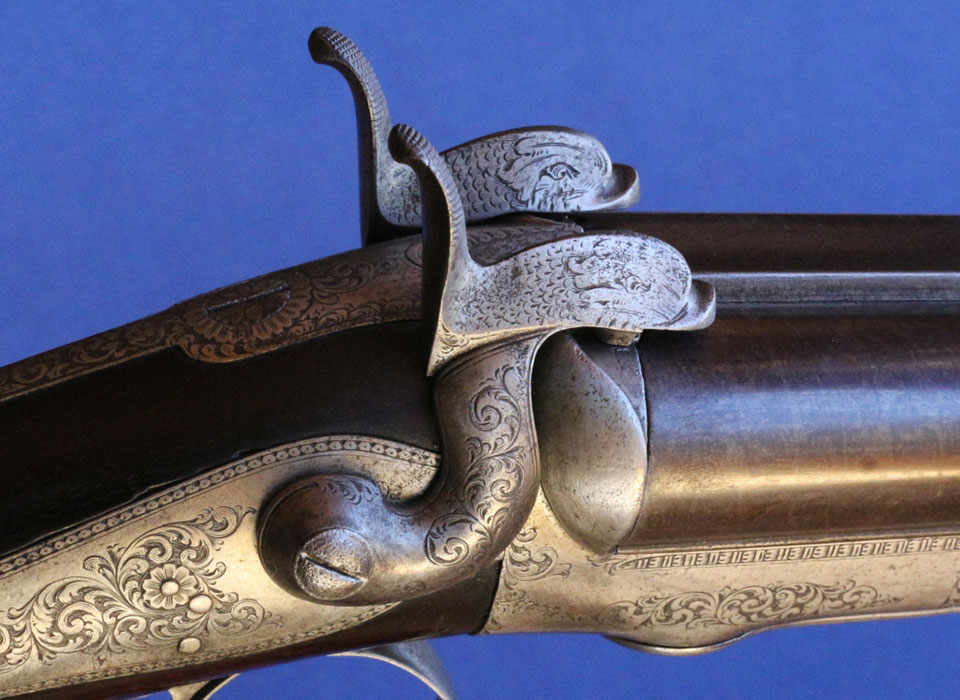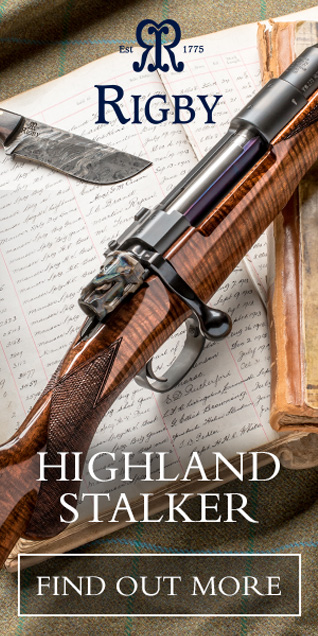What have the Romans (and Greeks) ever done for us? Inspired gun decoration, that’s what. Decorating one’s hunting weapons is amongst the oldest expressions of human art. Colouration is believed to be the oldest, but engraving is perhaps the next-oldest form of decoration on arms and can be found on weapons and hunting tools that date back to the Stone and Bronze Ages.
From the fifteenth century onwards, it has been (and continues to be) the favoured means of decorating sporting firearms. The arrival of the breech-loader offered a larger potential surface area for metal engraving than the muzzle-loader.

British tastes generally did not go for the chiselled relief engraving, flashy precious metal, bone and ivory inlays, carved stocks, and other visual distractions popular on French, German, and other Continental sporting guns at the time. British gunmakers often used engraving to pleasing effect, within the relatively constrained and conservative boundaries of sporting tastes. The typical British gun decoration of the day was exemplified by the subtle application of ‘acanthus leaf’ scrolls, border patterns, and occasional bucolic hunting scenes.
The leaf scroll engraving was a forerunner of the fine rose-and-scroll or bouquet-and-scroll patterns prevalent on later Victorian and Edwardian guns and familiar on fine sporting guns today. But where did the inspiration of using this leaf pattern come from, and what, exactly, is acanthus?
Acanthus is a group of flowering plants common in the Mediterranean basin. According to Greek mythology, the nymph Acantha was transformed into the acanthus plant by Apollo, as punishment for rejecting his unwanted amorous advances and viciously scratching his face.
Romans and the Greeks extensively used the acanthus leaf motif
The plant symbolised new life and growth, and the Romans and the Greeks extensively used the acanthus leaf motif in architectural decoration. Artists, carvers, engravers and sculptors continued the motif in Byzantine architecture, Medieval sculpture and wood carving, illuminated manuscripts, and Renaissance works. One can see acanthus leaf patterns almost everywhere in Victorian-era decoration. So, it is not surprising that the starting point for decorative engraving on early British breech-loaders was the acanthus leaf.

Often disguised as repetitive scrolls, the more open designs show individual leaves very well. The effect is subtle and discreet when appropriately done, placing the early British breech-loaders apart from more ostentatious decoration on Continental guns. But the use of architectural designs and popular symbolism goes back further, and fine British guns have always been adorned with them. In the 16th and 17th centuries, for example, the pineapple was the ultimate status symbol, as only the very rich could afford one.
Pineapple motifs abounded in architecture, famously decorating such iconic buildings as London’s St Paul’s Cathedral and many of the great houses. What better way to denote exclusivity and social status than to have pineapple motifs on your flintlock and percussion fowling pieces and pistols? The study of symbolism, or semiotics, is a recognised discipline that has been applied to many areas of study, such as architecture and the decorative arts. Curiously, little has been written on symbolism in gunmaking, despite its rich potential: harnessing the power of fire and explosion, and all that.
During much of the Victorian period in Britain, sporting guns were expensive and exclusive, and the ‘best’ guns were reserved for the rich and powerful. The Victorians were obsessed with the past, while revelling in what they saw as modernity and technology. The well-off benefited from a classical education, which served as their foundation for developing critical thinking, moral reasoning, and leadership qualities. To put it another way, everything Greek and Roman was judged good, so it is not surprising that the acanthus leaf appeared on guns aimed at the Greek- and Roman-obsessed.
Greeks also favoured the anthemion,
The Victorians were very much into symbology, applying this ‘language’ to jewellery, flowers and gardening, furniture, and other everyday objects. While most gun-making craftsmen lacked a classical education, they were nonetheless skilled in their craft and part of the growing movement centred on science and manufacturing. It was clever marketing on their part to include classical decorative flourishes, rich in meaning, for guns aimed at the classically educated. Such was already the case with jewellery, and therefore jewellery engravers, adept at the tricky task of engraving curved metal surfaces, were drafted to shape and engrave classical motifs on guns. In addition to acanthus, the Greeks also favoured the anthemion, a flat, radiating/repetitive floral ornament, though some argue this was derived from the ancient Egyptian lotus-leaf palmette.

Combine acanthus and the anthemion, and you get the flowing scrolls one readily associates with British gun engraving. Hammers on hammer guns offered subtle sculptural opportunities, and a popular decorative motif was the dolphinfish (mahi-mahi, or dorado), a species first named and described during the voyages of Sir Walter Raleigh in the 1580s, but appearing in Greek art since at least 1600 BCE.
Another popular hammer motif was the swan, a symbol of grace and fidelity, which had the advantage of disguising the cap guard of the percussion hammer as the bird’s beak (the cap guard was a holdover feature from percussion gun hammers, meant to deflect flying bits of copper cap).

British gunmaking has always included features from the past to imply design continuity, and many centrefire hammers on Edwardian guns and later modern ones still retain traces of this unnecessary feature.
you will see quite delicate and elaborate designs that took considerable time
Another significant element of Greco-Roman art can be found in borders and border patterns. Look closely at a British double gun, and focus on the border work: the simplest is a single line, but usually there is a repeating geometric pattern, often intertwined in a guilloche. Look very closely, and you will see quite delicate and elaborate designs that took considerable time and skill to execute, even if it is the least-noticed part of the engraving pattern.

What is the inspiration for these patterns? The answer is Greek and Roman vases and pottery. To the classically educated upper classes, these were familiar patterns that echoed the decorative arts in their country and town houses. And such patterns on guns were typically British. Floral patterns on Continental guns in the 19th century tended to favour vines, oak leaves, etc., deeply incised blackleaf patterns, and very simple line borders.
Where French, Belgian, German, and Austrian sporting guns used finely detailed border patterns, they were often intended either for the British market or to mimic British guns for a domestic market that considered them the ultimate in desirability.

In summary, Victorian sporting guns were awash with classical symbolism and meaningful flourishes, aimed at pleasing the eyes of wealthy patrons brought up on Greco-Roman imagery and the hidden language of symbols. Many of these patterns and designs continue to this day, if one takes the time to notice them.
Words & photographs by Stephen Nash
15 November, 2025
Published by Vintage Guns Ltd on




